Childhood Occipital Visual Epilepsy (COVE) is rare, self-limited focal epilepsy syndrome which usually begins in middle childhood at around age 8, but may develop as early as 1 year or as late as 19. It is associated with brief focal visual seizures. Self-limited means it’s likely seizures will stop by a certain age.
COVE was formerly known as Late onset (benign) occipital epilepsy, or idiopathic childhood occipital epilepsy - Gastaut type. It affects boys and girls equally. About one‐third of the children have a family history of epilepsy; and some of the children have had seizures with feverish illnesses (febrile seizures) before starting to have COVE. A family history of migraine may also be present (9-16%). Most children with this condition have typical neurological development and learning abilities.
Symptoms
The focal sensory seizures arise from the occipital lobe which controls vision and so the symptoms largely reflect disturbances in vision. These seizures occur mostly or exclusively in waking.
The seizures are brief, usually less than 3 minutes, but can be frequent if untreated. Complete or partial temporary visual loss can occur. Some children may experience visual effects such as multi-coloured circles in their peripheral vision, increasing across their visual field. These symptoms may be followed by turning of the head, eye deviation or rapid movements of the eyes. Other occipital seizure symptoms may include visual hallucinations, eyelid fluttering or closing, and nausea or vomiting.
Seizures may progress to involve other brain areas and automatic movements or involuntary movement may occur, as may weakness or impaired awareness. Focal to bilateral tonic‐clonic seizures may also occur. Seizures are often followed by a headache.
Diagnosis
A full complete history, given to the doctor, is always essential in making a diagnosis. In the EEG (electroencephalogram) test which records the ongoing electrical activity in the brain, abnormalities are often seen in the occipital region (the most posterior part of the brain). This may be more likely to appear on a sleep EEG. Brain MRI and CT scans are normal.
Treatment
The seizures respond readily to Anti-Seizure Medications such as Valporate (Epilim), or Carbamazepine (Tegretol), Levetiracetam (Keppra) and oxcarbazepine (Trileptal). As valproate can be harmful to the unborn child, other ASM’s may be used with females of childbearing age.
Prognosis
The outlook is good for neurological development and educational problems are rare. The seizures often stop by puberty (50-80%), but in a very small percentage of cases they can persist into adulthood. Medication may be withdrawn by the doctor if seizures remain controlled, but some people will need to remain on treatment long-term.
Further Information
- Further information on Anti-Seizure Medications can be found by visiting the 'Treatment' section of our website.
- Further information on diagnosis can be found by visiting the 'Diagnosis' section of our website.
- Other useful resources surrounding epilepsy can be found throughout our 'Epilepsy Information' section.
- If you need any information or support regarding epilepsy, contact your local Community Resource Officer - you can find their details by visiting the 'Our Local Service' section of our website.
